| Newsletter - 2006 Archive |
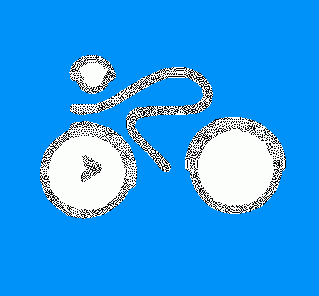
|
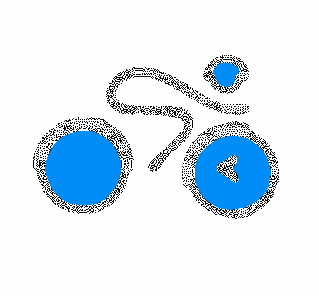
|
Cycling Club |
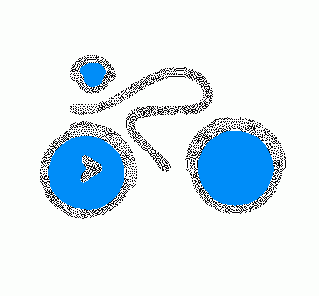
|
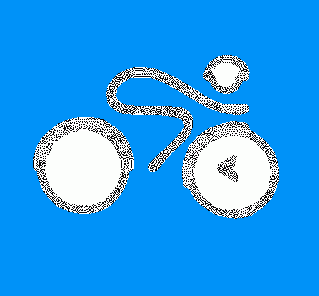
|
| Newsletter - 2006 Archive |

|

|
Cycling Club |

|

|
Next--->
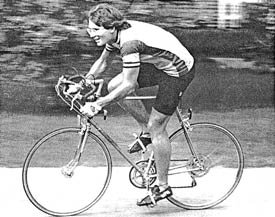 The author in pre-apocalyptic form before the ’87 PBP. My Little Secrets
to PBP Survival First of all I would like to make it clear that I am not an athlete. I never did a bike race before PBP. I had done some touring. I am a hermit who generally avoids human contact. In 1986 I saw a notice about randonneuring in a bike shop in Kitsilano. I thought doing PBP might be a good way for me learn how to interact with humans. Wow, was I ever wrong about that. I did not plan on doing a lot of rando rides. I really just wanted to go to France and ride my bike past fields of sunflowers like you see in pictures of France. Unfortunately, I did not read the instructions carefully and I did two complete seasons of rando rides before I found out you only had to do one season to qualify for PBP. I was in pretty good shape by that second season of randonnée’s. So off I went to Amsterdam (I could not afford a flight all the way to Paris). I rode my bike from Amsterdam to Paris, getting lost several times along the way. It was, however, a delightful trip and I met some people in Belgium who recognised the rando bike and stopped me to ask whether I was going to PBP. For some reason Belgians feel it is necessary to fortify PBP’ers with hectares of Belgian Trappist beer. I began to think that I had not drunk enough beer in my PBP training. I will not bore you with a tedious ride report of my accidental tourism in Belgium, which I can’t remember anyway (although I do remember weaving down the road so slowly I was passed by a horse-drawn cart with a full load of hay on it). Then I did PBP. That was pretty well a blur too (even though I had completely sobered-up by that point). PBP was a little more, shall we say, challenging, than what I had imagined. Normally I am insensitive and detached. I almost burst into tears of joy at the end of that PBP. I swore I would never, ever in a million years, ever even dream of doing PBP again. Four years later, I was back in Paris doing PBP again. That first PBP was humbling, even humiliating, but I did quite well, all things considered. I was the second fastest BC Randonneur, after John Carrol. It was a tough PBP too. There was driving wind, rain and cold almost all the way to Brest. Sunny warm southern California PBP’ers were later given a stern talking-to for their incredibly high DNF rate. The second PBP was just humiliating. Real
cyclists like Keith Fraser, Peter Stary, Ken Bonner and Gerard
McLean showed up. Fraser literally rode circles around roadkill
like me. He passed me twice on the way to Brest (once in each
direction – he rode part of the route twice because he left
his control card behind – show off!). I put in some extra
mileage myself. A Belgian guy and me accidentally led a furious
double paceline of speeding randonneurs about 25km right off
the PBP route in the middle of the night. There was no alcohol
involved either.- The Worst Thing I Did in 1991 I signed up for the fast PBP group because
of the convenient time of day they were launched from Paris.
Their speed was awesome. I had never ridden so fast. It was exhilarating,
and terrible. By the first control I felt like I had been in
a really bad barfight. I was in Brest much sooner than I had
anticipated – 650 km in 25 hours, with the detour (and a
couple of flats). That was too fast for comfort.- My Training I never did any training. I was working
50-70 hours a week at the time. I rode my bike to work and sometimes
I did a few circuits of Marine Drive at UBC, on the way to or
from work. That’s all I had time for.- Your Training Ride as much as you can. Get rid of your car. Ride to work. Ride to Vancouver Island or Washington on the weekends. Get away from the polluted air in Vancouver. Polluted air is really bad for you. The pollution wasn’t nearly as bad in Vancouver in 1991. Practice riding fast. Endurance comes from hours spent on the bike. Speed comes from practice. The speed will help you at PBP. Try riding fast for 10 or 15 minutes at a time. Ride your bike at least 4 days a week, but not more than 6 days a week. You need a rest day. You do not have to ride your bike 40 hours a week. By the time you do the 400 you will know how much time you have to spend training. Try to start your bike training by mid-April. You don’t have to ride all year round. Running will not make you a better cyclist. I find running actually makes me a worse cyclist. Try to quit that running during the cycling season. I used to swim during the winter. Swimming does not really help your cycling but it’s more fun than cycling in the winter. Cross-country skiing and rowing are super off-season ways to get in shape for cycling. I owned a Concept II rowing ergometer which is moderately amusing because it comes with a computer to look at. Don’t use an indoor bike trainer. You’ll make yourself insane. I had some rollers until I rolled off them and smashed into a bedroom wall. Don’t get hit by cars. I mean, if
you live outside Vancouver, you can avoid being hit by cars.
In Vancouver, try to get the plate number if you are still conscious.
If your injuries are serious enough, take a week off the bike.
Last year I rode my bike with one hand because my arm was in
a cast. I was only able to use one brake. You can work around
your injuries.- Your Bike- Cycling is an equipment sport. The equipment can make you faster. I have used cycling equipment to make up for my inadequacies as a cyclist. Why not? It’s not like you are actually cheating. Fancy equipment makes you less of a man, but so what? Don’t use a mountain bike. You’ll wreck your hands and the mountain bike position is as un-aerodynamic as possible. If you need a challenge, just drag a cinder-block behind your road bike. Make sure your bike fits. That is really, really, really important. Women have to be especially careful. Men’s bikes are not for women. Smaller women should consider a finely-crafted handmade frame made just for you. There are framebuilders who do that. There are experts available to do bike fitting. The critical bike measurements are seat height, seat to handlebar distance and handlebar height. For most randonneurs, the handlebar should be higher than what a bike racer would use. If the bars are too low, you’ll end up with something called Shermer Neck, which can stop you in your tracks. Ditch the tri-geek bars. They are bad etiquette and they can leave you with weird ergonomic injuries. Smaller cyclists should check their crankarm length. Most new bikes come with 170 mm or 175 mm crankarms that are too long for smaller cyclists. Use Cinelli Cork Ribbon on your handlebars. Change your hand position often to avoid hand injuries. Wear good gloves. I have some Italian Gist Gel Active Speed Control Supersonic Cyclismotron cycling gloves that are quite spiffy and unusually grippy (they have Speed Control Ultrapolymer Microbumps on the Active Palm). I got the gloves from Guiseppi at Campione Cycles at 8th and Burrard. You can use whatever type of road frame you want. I like handbuilt lugged and brazed steel frames made by a skilled craftsman (or craftswoman – and yes there are female framebuilders who specialise in female frames). I don’t trust carbon-fiber forks. A nice touring frame will do for PBP. A touring frame is also more generally useful than a racing frame, after PBP. One reason for buying a good handbuilt frame is so you know it’s aligned. A cheap mass-produced frame that is misaligned can slow you down. I wouldn’t worry too much about having your frame alignment checked. Most bike shops don’t know how to properly check bike alignment. Use good components you can rely on. Shimano 105-grade is sufficient. I prefer bar-end shifters because they are more reliable but I know only us senile old retro-grouches use ‘em. Don’t use old cables or housings for the PBP. Don’t use cheap cables or housings. I prefer Sedis chains. I would put in a new bottom-bracket just for the hell of it. The new-style ones don’t seem to last very long. I go through a couple of BB’s a year. It’s not the type of thing you want crapping out on you at PBP. Put on some new derailleur pulleys. Aw heck, put on a new Sedis chain, a new freewheel and cogs and a new inner (middle, if you are using a triple) chainring at the beginning of the PBP year. You don’t really want your freewheel guts splatting at PBP. Cyclists really need good expert advice
about parts. Ask Harold about this whole parts thing. If Harold
is not around have a look at Sheldon Brown’s advice: http://www.sheldonbrown.com/harris/index.html- Wheels- Ok, I confess I don’t know much about bike parts, but I do know wheels. I build my own wheels. If you want good wheels then learn to build ‘em yourself. It’s tons-o-fun. If you can knit a sweater, you can learn how to build wheels. Poorly-built wheels will slow you down (especially the back one – it’s your power transmission wheel!). I use Mavic rims, Velox rim tape and DT swaged (butted) spokes. The butted spokes make your wheel last longer. It’s not very high tech but I use linseed oil as a spoke-prep. I can put 20,000 kms of hard use on a back wheel without having it go out of true. When buying new wheel parts I consult a wheel expert to find out what are the current best Mavic rims. Don’t use superlight wheels that are so fragile you will need a team mechanic to follow you in a car. You need light wheels that are tough enough for randonneuring. I would avoid most of those silly factory-built wheels that look like they have some of the spokes missing. Most of them suck, especially at durability. Most of them are designed so they can be built cheaply, by a machine. They are not designed to last in heavy use. I wouldn’t trust ‘em. If I were you, I would get a second set of wheels just for rando rides. It’s convenient as hell if you only have one bike. Two good books on wheelbuilding are: The Bicycle Wheel by Jobst Brandt, Avocet Inc, Palo Alto, California The Art of Wheelbuilding by Gerd Schraner, Buonpane Publications, Denver, Colorado They are usually available at the Mountain
Equipment Co-op.- Bike Weight- Bike weight is important. Supposedly, there is 35,000 feet of climbing in PBP. I’m gonna go with Lon Haldeman, who says: "My rule of thumb is that a bike should weigh 12% of the rider. That means a 200 lb. rider = 24 lb. bike or 150 lb. rider = 18 lb. bike." You don’t actually have to weigh your bike. Just keep an eye on any unnecessary weight. A 150 lb rider is really going to notice a few pounds of weight difference. Luckily 150 lb riders have the advantage of being able to use bike parts that would be considered stupid-light for a 200 lb rider. I use a seat bag, of which there are many
varieties. Panniers and a pannier rack are just too heavy for
randonneuring if you ask me. If you run out of room, you can
add a handlebar bag. Ask yourself whether you really need all
that stuff.- Your Weight Most likely you are too fat. Take a look
at those professional bike racers. You can clearly see their
circulatory system and musculature functioning under their skin.
They have no subcutaneous body fat. If you are not shivering
at room temperature, you may want to think about your lifestyle
choices.- Bike Seats Which seat should you use? Whichever one you‘re used to I guess. It just depends on how much you like suffering. Some people swear by a well broken-in Brooks saddle. Some masochists have used the appropriately-named Selle Italia Carbonio. Those car-bone fiber seats are for hardass racers who rarely ride more that 250 km a day. If you look closely at professional bike racers, you will see that they are usually floating slightly above the surface of the seat, away from harms way. Those guys are as light and spindly as supermodels. I have never had a blistered butt. I have never used any skin potions. I have used a heavy Avocet Gel touring seat for both PBP’s. No problems. I realise one gets butt-blisters not just from point-pressure but mostly from (normal) skin bacteria, but if you ask me Gel is a miracle. It’s like sitting on real human flesh. One way to avoid seat trouble is to reduce the amount of weight on the seat. You could lose some weight. You could also get rid of that triathlon Crazy-Straw hydration bladder on your back. If you are a woman, use a woman’s
seat. Some women’s seats are better than others. Some seat
makers have not been putting a very sincere effort into women’s
seats. The seats with the centre cut out are a really good idea
for both men and women. The cut-out allows better air circulation,
which prevents butt-blisters on long rides.- Shoes I used proper road racing shoes for PBP. You could use mountain bike shoes. The mountain bike shoes will reduce the possibility that you will slip and kill yourself when you are off the bike at the controls. I have racing shoes but most of the time I wear Shimano mountain bike shoes on my road bikes. For mountain bike shoes they are not that heavy. Just keep in mind that lighter shoes will make you faster. To avoid hot foot I use Spenco insoles.
They are heavy and power-robbingly squishy but they prevent hot
foot for me. Make sure you use some kind of insoles so you don’t
get pressure points on your feet.- Tyres I’m not going to touch this one. Tyre choice is a moving target and there are lots of self-proclaimed experts. Suffice it to say you should use good quality tyres. It’s a compromise between light weight and not getting flats from punctures. Lighter tyres are faster because they have less rotational inertia. Some tyres have a lower coefficient of rolling resistance under certain rider weights. If you really don’t like fixing flats you could try Continental Ultra Gatorskin tyres. They seem pretty fast to me and they are tough enough for tandem use. Whatever you use, make sure you check your tyres on a regular basis. Most flats are caused by tiny pieces of glass that slowly migrate from the outside of your tyre to the inside by the squirming forces of tyre motion. Occasionally deflate your tyres and give them a squeeze so you can pick out the sharp bits before they migrate to the tube. Carry an extra tube or two, just in case. I carry an extra piece of sticky-back hard rubber that I can use as a boot on the inside of a heavily damaged tyre. Tandems are another story. Don’t use
old worn tyres on a tandem, especially on the front. I use steel-beaded
tyres on tandems. Don’t use lightweight tyres on a tandem.- Food If I were you, I would rely mostly on the control stops for food. Take along a few Powerbars or whatever, in case you start bonking. I have tried all the miracle drink powders. They don’t work. I even tried making my own miracle powder. That didn’t work either. Your body naturally craves real food. Even those scrumptious Powerbars will eventually lose their gourmet appeal on a ride as long as PBP. I could do the whole PBP on Chinese food and grapefruits but that’s an individual thing. You may want to experiment during the brevets to see if you are suffering from potassium depletion or other depletions that can be remedied by eating certain types of foods. Try to avoid food with a lot of unnaturally-occurring
sugar. The blood-sugar spikes will send your emotions all over
the place and could dehydrate you.- Coffee- I remember Scott Dickson saying that he
stopped drinking coffee the year before each PBP so he could
get the maximum effect from coffee if he did drink a coffee on
PBP. That strategy sure worked for Scott Dickson. It didn’t
work for me. I had one giant bowl of coffee on PBP and it had
absolutely no effect on me whatsoever.- Caffeine Pills and Other Drugs Are you going to take pills just so you can finish PBP? Just think about that for a few minutes. Is that how you want to represent Canada? PBP is not the Olympics. You don’t have to take drugs to succeed. I mean what’s next? Am I going to see you laying unconscious in a downtown alleyway, with the needle still stuck in your arm? If you want to become a filthy mess you can do that just by riding your bike, without drugs. The only drugs I take are Rolaids. The
calcium keeps my stomach less upset on long rides with Tim Horton.
The only other drug I take is coffee, but I am quitting that.- Sleeping I have an occupation that involves a lot of sleep deprivation so I consider myself to be an expert on the topic. I had a sleep plan for PBP. I was so confident and self-assured. Ha, ha, ha! PBP destroys all self-proclaimed experts! By the time I got to Brest I fell asleep in a chair by the control desk after I reached down to adjust my shoes. I never slept so well in my life. You could try that old truck drivers trick of sleeping for a couple of hours during the time you would normally be in REM sleep. That can trick your brain into thinking you have had adequate rest. You don’t need an alarm clock. The primordial fear of PBP will naturally wake you up, eventually. Don’t fall asleep on bare concrete. The concrete will suck all your body heat away and leave you with annoying rigor mortis. Don’t stop by a farmers field for a quick nap in the evening and lean up against a live electric fence and get zapped for a solid 20 seconds before you realise you are leaning against an electric fence. I don’t really believe in stopping
at a hotel for a lovely night’s rest. It must be terribly
difficult to leave the comfort of a hotel room to go back to
the relative discomfort of PBP. There is surely a reasonable
PBP compromise somewhere between a hotel bed and an electric
fence.- Should You Do a 1200 as PBP Training? What? Are you nuts? Why kill yourself?
Are you not getting enough pain from the 600? I mean what’s
the point? If you can survive the 600, you can survive anything.
Your time on the 600 will give you some idea of your time for
PBP. 600 km is crazy enough. 1200 km is just plain nuts.- What I’m Doing to Prepare For PBP 2007 It’s been 20 years since my first PBP and I am in absolutely horrifying condition now that I am in my twilight years. I am no Deirdre Arscott. I have missed a few PBP’s. When I should have been cycling I was away wasting my life on another university degree. Then I was working such long hours I could not get to the brevets on time. Then I was nailed by homicidal Vancouver motorists, a couple of times. It’s been one sorry excuse after another. My latest injury was life-altering to the point that I was only able to exercise by eating everything in sight and I gained 30 lbs, not surprisingly. I am not religious but it will be an Honest-To-God religious miracle if I can ride 600 km by 2007, so I am in a pretty good position to give a sincere and heartfelt motivational lecture to you, my fellow fat outta-shape old men grasping for that last, elusive shred of dignity before our inevitable assignment to institutional care. See you in Paris.
March 5, 2006 |
_